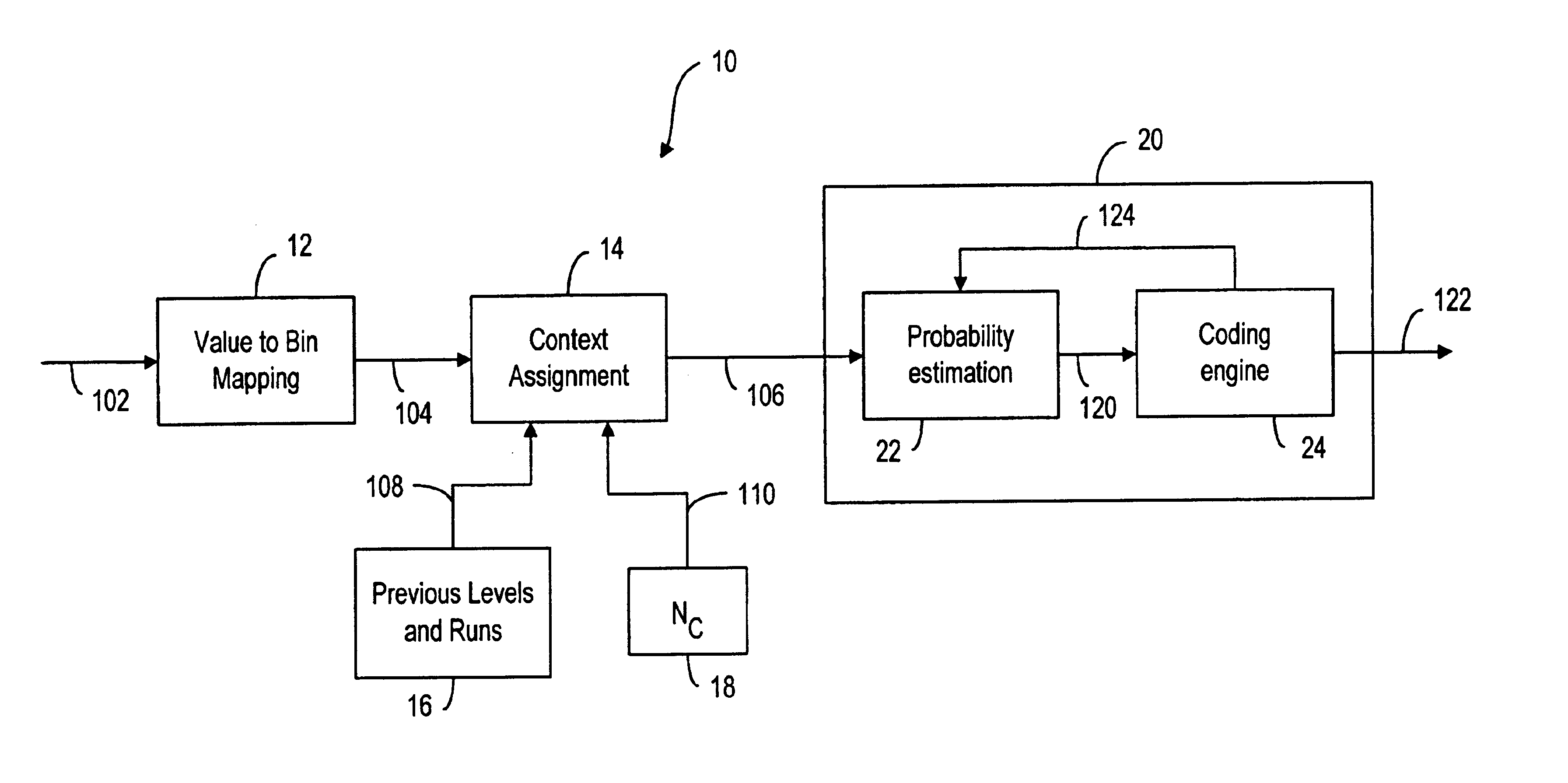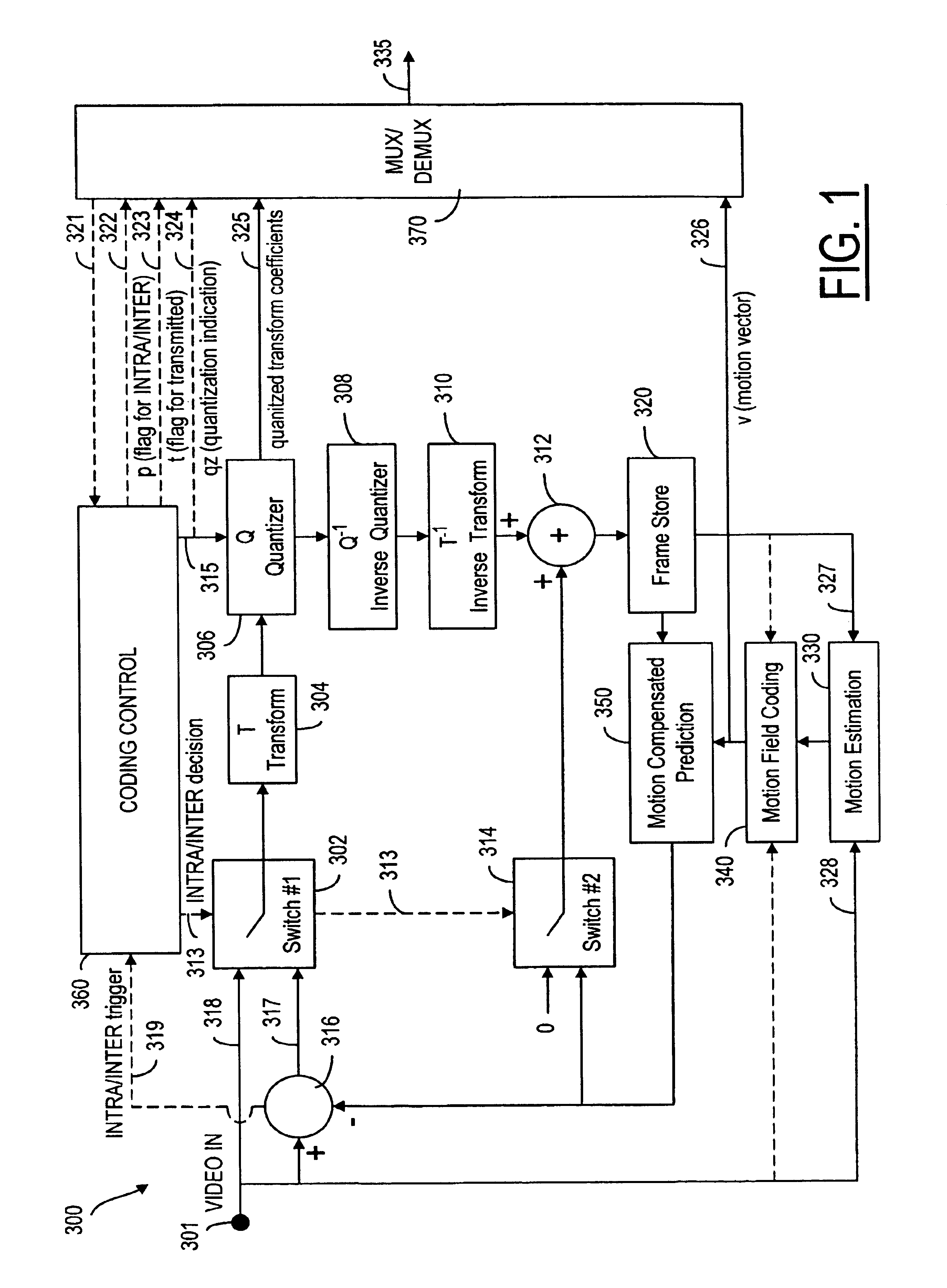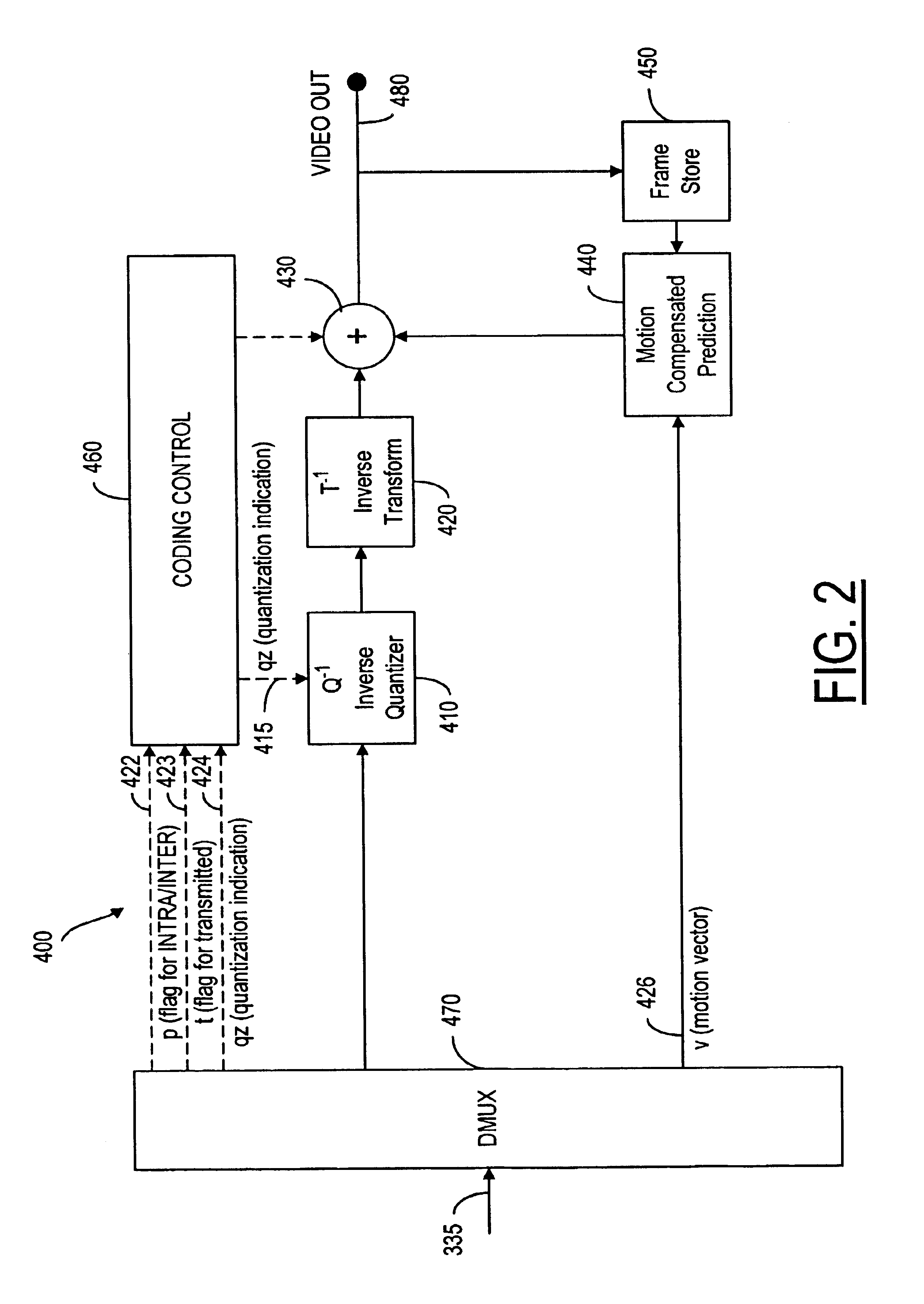Method and system for context-based adaptive binary arithmetic coding
a binary arithmetic and adaptive technology, applied in the field of still images and video sequences, can solve the problems of excessive memory required to store digital images in uncompressed form, network congestion, and long transmission times, and achieve the effect of further improving coding efficiency
- Summary
- Abstract
- Description
- Claims
- Application Information
AI Technical Summary
Benefits of technology
Problems solved by technology
Method used
Image
Examples
first embodiment
the invention, described in detail in section 1.1 below, relates to a context-based binary arithmetic coder suitable for use in an image coding system such as that defined by ITU-T recommendation H.26L. In this embodiment, level values generated by run-level coding the quantized transform coefficients of a transform coded block of image pixels are assigned to contexts taking into account the level of another transform coefficient belonging to the same block.
second embodiment
the invention, described in detail in section 1.2, also relates to a context-based binary arithmetic coder for an image coding system such as that defined by ITU-T recommendation H.26L. In the second embodiment, run values produced by run-level coding the quantized DCT transform coefficients of a transform coded block of image pixels are assigned to contexts taking into account the level value of the run-level pair to which the run value belongs.
The third embodiment of the invention is described in section 1.3 and also relates to a context-based arithmetic coder for an image coding system such as that defined by ITU-T recommendation H.26L. According to the third embodiment, the number of non-zero transform coefficients Nc for a transform coded image block is determined and assigned to a context taking into account the context assigned to the Nc value for at least one other transform coded image block.
A preferred embodiment of the invention combines the functionality of the three abo...
PUM
 Login to View More
Login to View More Abstract
Description
Claims
Application Information
 Login to View More
Login to View More - R&D
- Intellectual Property
- Life Sciences
- Materials
- Tech Scout
- Unparalleled Data Quality
- Higher Quality Content
- 60% Fewer Hallucinations
Browse by: Latest US Patents, China's latest patents, Technical Efficacy Thesaurus, Application Domain, Technology Topic, Popular Technical Reports.
© 2025 PatSnap. All rights reserved.Legal|Privacy policy|Modern Slavery Act Transparency Statement|Sitemap|About US| Contact US: help@patsnap.com



